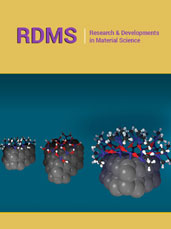- Submissions

Full Text
Trends in Telemedicine & E-health
Towards Support Systems for Better Sleep Adapted to Not Single but Paired Users: A User Study in Home Nursing Care on Effects of Daughter AI’s Speaking to Husband and Wife as HCI before/after Sleeping on Quality of Sleep
Madoka Takahara1*, Ivan Tanev2, Katsunori Shimohara2, Satoko Yoshida2 and Shun Hattori3
1Ryukoku University, Japan
2Doshisha University, Japan
3The University of Shiga Prefecture, Japan
*Corresponding author:Madoka Takahara, Faculty of Advanced Science and Technology, Ryukoku University, 1-5 Yokotani, Seta Oe-cho, Otsu 520-2194, Japan
Submission: January 29, 2025; Published: February 14, 2025

ISSN: 2689-2707 Volume 5 Issue 3
Abstract
In Japan, “Sleep Debt” and “Sleep Deprivation,” especially in Japanese children and women and in Home Nursing Care (HNC), are being social problems. Even though we do not always live alone and our sleep sometimes affects each other between multiple persons, e.g., a pair of a child and her/his parent, a couple, and a group of family members with/out pet animal(s), by sharing our living space and a sleeping room, there exists no study on support systems for better sleep adapted to not a single but paired users other than the authors’ studies. Therefore, this paper more deeply conducts a generalized study on their adaptation to relationships and interactions not only between a single user and a system with an Artificial Intelligence (AI) but also between paired users (and a system). In addition, this paper reports a specialized user study in home nursing care, on effects of a support system not only on each single user’s Quality of Sleep (QoS) but also on paired users’ Quality of Paired Sleeping (QoPS). The proposed system offers a daughter AI’s speaking to a pair of her father (who is a husband and a care receiver) and her mother (who is his wife and his care giver) as a Human-Computer Interaction (HCI) before/after their sleeping. The AI speaker has the synthesized voice by Google Home, real voice of a close member, e.g., a daughter, or a stranger of the paired subjects’ family, as control variables.
Keywords:Sleep informatics; Sleep education engineering; Quality of Paired Sleeping (QoPS); Multiparty dialogue; Boundary and relationality perspective systemics
Introduction
Japan is said to have the world’s worst “Sleep Debt” [1-3]; and “Sleep Deprivation” [4], and it has long been a social problem with large economic losses. In recent years, sleep disorders, especially in Japanese children and women, have become a serious problem [2,5]. According to the survey “Gender Data Portal 2021” [6] by the Organization for Economic Cooperation and Development (OECD), Japanese sleep an average of 7 hours and 22 minutes, which has come in a slamming worst place in the surveyed 33 countries, while the surveyed 33 countries sleep an average of 8 hours and 28 minutes* (*Note that Japan was also the worst in “Gender Data Portal 2019” and does not indicate an improving trend, while South Korea, which is the 2nd worst, has an average of 7 hours and 51 minutes with indicating an improving trend). Especially Japanese women sleep the least in the OECD survey of 33 countries because of inequality between husbands (Men) and wives (Women) in household chores [7]. Similarly, according to “the National Health and Nutrition Survey in Japan” [8] by the Ministry of Health, Labour and Welfare (MHLW) of Japan, not few Japanese sleep less than 6 hours on average and do not get enough rest by sleeping. Our Quantity/Quality of Sleep (QoS) are closely related to our Quality of Life (QoL), and co-affect our activity performance in the daytime, mental state, health, and so forth. Not-good QoS causes us not only to be with insomnia, but also to have increasing Morbidity Prevalence Rate (MPR) of the other various diseases [9,10]. We might be caused to have worse QoS and worse MPR in a negative spiral.
To solve these social problems, there have been various attacks
for improving Japanese sleeping habits:
i. Sleep health education for Japanese children and
adolescents [11-19], e.g., as one time lecture at elementary
schools [14], with a self-help treatment at junior high schools
and high schools [16,17], and practice at universities [19].
ii. Sleep health education for Japanese parents, especially
women with infant(s) [20-21] and pregnant women [22].
iii. Sleep health education for Japanese children with
their parents, e.g., Let’s Try “Early to Bed, Early to Rise, and
Early Breakfast” with children and their parents [23], and a
collaborated nurture game “Neko x Neko” for sleep education
with a pair of a child and her/his parent [24,25].
iv. Sleep health education for Japanese laborers [26-27].
v. “Sleep education package” for Japanese students by selfmonitoring
their own sleep with sleep diary Tamura & Tanaka
[28,29].
vi. “Healthy Japan 21” by the Ministry of Health, Labour and
Welfare (MHLW) of Japan [30].
Not only in Japan but also all around the world, to solve various problems on sleep is of considerable concern, and various researches and developments on sleep have been being conducted very actively† (†Note that the history of researches on sleep is not long worldwide [31-33]). The conventional studies on sleep in Japan include “Somnology” [34] by integrating “Sleep Science,” “Sleep Medicine,” and “Sleep Sociology,” and the others, e.g., “Sleep Psychology,” “Sleep Hygieiology,” and “Sleep Environmentology.” Meanwhile, especially “Sleep Informatics” and “Sleep Education Engineering” have yet been less-developed and developing fields of studies on sleep [35]. In recent years, not only researchers but also ordinary people in Japan have been beginning to pay their attention to SleepTech [36-37], e.g., wearable sleep sensors such as Fitbit and Oura Ring, beds and mattresses equipped with wearable sleep sensors and Artificial Intelligence (AI), smart sleepwears such as “Digital Health Care Pajamas” [38], IoT (Internet of Things) control over home electrical appliances such as air conditioning, acoustics, and lighting [39], sleep apps (application programs) such as “Sleep Diary” [40,41], “ReSleep” [42], “Nenne Navi” [43], “Sleep Angel” [44], and sleep digital games Cai et al. [45-47] such as “Neko x Neko” [24,25] and “Pokemon Sleep” [48].
Most of the existing support systems for better sleep are designed for a single user, not for a pair of users or a group of multiple users. However, we do not always live alone, and our sleep sometimes affects each other between multiple users, e.g., a pair of a child and her/his parent, a couple, and a group of family members with/out pet animal(s), by sharing our living space and a sleeping room. For instance, the longitudinal survey of newborns in the 21st century [49,50] by the Ministry of Health, Labour and Welfare (MHLW) of Japan, shows that the proportion of children who go to bed earlier than 21 o’clock is lower than 20%. And also, it shows that a child’s sleep is greatly affected depending on her/ his parent(s), e.g., in a child’s family where her/his mother works (except household chores), the longer her/his mother’s labour time is, the higher the proportion of children who go to bed later than 22 o’clock is [51]. Similarly, according to the survey of “Sleep Deviation Value” for kids in 2021 by Brain Sleep [52], a child’s sleep debt seems to be affected depending on her/his parents’ sleep debt. Meanwhile, there exist a few studies on couples’ sleep, as a kind of pairs. Bidirectional associations between couples with daytime relationship functioning seem to exist between nighttime sleep parameters (e.g., sleep efficiency and concordance) and interpersonal interaction, and may represent a novel pathway linking close relationships with physical and mental health [53]. Couples’ sleep duration covaried night-to-night and their sleep quality covaried on average across days, while a male’s sleep duration is predicted by the female partner’s sleep duration but not vice versa [54]. The secondary analyses of an actor-partner analysis on sleep quality and inflammation in married heterosexual couples [55], focused on the different components of sleep quality, revealed marginally significant evidence for partner’s poor sleep (i.e., sleep disturbances, sleep latency) on one’s own inflammatory outcomes.
Not only “Sleep Debt” and “Sleep Deprivation” but also “Nursing Care by the Elderly for the Elderly,” “Nursing Care by the Elderly with dementia for the Elderly with dementia,” “Nursing Care by the Elderly for the Disabled,” “Care by the Young (i.e., Young Carers),” and “Care by Parent(s) in 80s for her/his Adult Child in 50s (i.e., 8050 Problem)” and so forth are being social problems in Japan. Therefore, we need support systems for better sleep designed for not a single but multiple users, such as a pair of a care receiver and her/ his care giver in Home Nursing Care (HNC). However, there exists no study on support systems for better sleep designed for a pair of users or a group of multiple users other than the authors’ studies [24,25,56-59]. Therefore, towards support systems for better sleep adapted to not a single but paired users, this paper more deeply conducts a generalized study on their adaptation to relationships and interactions not only between a single user and a system with an Artificial Intelligence (AI) but also between paired users (and a system). In addition, this paper reports a specialized user study in home nursing care, on effects of a support system not only on each single user’s Quality of Sleep (QoS) but also on paired users’ Quality of Paired Sleeping (QoPS). The newly introduced QoPS can measure a pair of multiple users’ qualities of sleep comprehensively, while QoS can measure each single user’s quality of sleep individually. The proposed system offers a daughter AI’s speaking to a pair of her father (who is a husband and a care receiver) and her mother (who is his wife and his care giver) as a Human-Computer Interaction (HCI) before/after their sleeping.
This paper has the following contributions:
i. There exists no study on support systems for better sleep
designed for a pair of users or a group of multiple users other
than the authors’ studies;
ii. A generalized study on their adaptation to relation- ships
and interactions between paired users and AI(s) in a system,
has been conducted;
iii. A specialized user study in home nursing care on effects
of a daughter AI’s speaking to a pair of her father (who is a
care receiver) and her mother (who is his care giver) as a HCI
before/after their sleeping on their QoS and QoPS, has been
reported.
The remainder of this paper is organized as follows. Because there exists no study on support systems for better sleep designed for a pair of users or a group of multiple users other than the authors’ studies, Section 2 conducts a survey of the related studies to this paper in the other fields of studies than “Sleep Informatics,” “Sleep Education Engineering,” and “SleepTech” designed not for a single user but for multiple users. Section 3 conducts a generalized study on AIs’ adaptation to relationships and interactions between paired users and AIs, towards support systems for better sleep adapted to not a single but paired user. Section 4 reports a specialized user study in home nursing care on effects of a daughter AI’s speaking to a pair of her father (who is a care receiver) and her mother (who is his care giver) as a HCI before/after sleeping on their QoS and QoPS. Finally, Section 5 conclude this paper, and gives future directions for the implementation and validation.
Related Work
There exists no study on support systems for better sleep designed for a pair of users or a group of multiple users other than the authors’ studies [24,25,56-59]. Therefore, as Related Work, this section conducts a survey of the existing studies on systems designed not for a single user but for multiple users, in the other fields of studies than “Sleep Informatics,” “Sleep Education Engineering,” and “SleepTech.” In the study field of “Dialogue Robots,” most of the existing support systems are also designed for a single user, not for a pair of users or a group of multiple users. And thus, a single dialogue robot interacts a single user individually [60]. In the study field of such “Dialogue Systems” based on LLM (Large Language Models) as OpenAI’s ChatGPT, a single dialogue system also interacts a single user individually, and their challenges include personalization [61-64], context-awareness [65-69], and characterization [70-73].
Meanwhile, there exist several studies on “Multi-party Dialogue
Robots/Systems” [74] for conversations between multiple
participants such as users and robot(s)/system(s). Such a multiparty
multiparty dialogue robot/system requires
i. to regulate imbalanced engagement density in a multipleparticipant
conversation with proper proce-dures for obtaining
initiatives, e.g., a four-participant conversation as the fourth
participant [75],
ii. to process Social Signals such as
a. emotion
b. personality and skill
c. social status and role,
d. dominance,
e. persuasion,
f. rapport and attitude,
g. others,
h. regulation,
by recognizing them, estimating how interestedly a participant
listens to a conversation, and changing the subject of the
conversation if not interestedly [76,77] and
iii. to automatically generate Social Signals such as facial
expressions of physical robots [78], virtual agents [79], and
anthropomorphic agents [80-82].
In such study fields of “Dialogue Robots/Systems,” researches on not only machine-type robots such as PDDIN [66], but also humantype robots (humanoids) [83] and pet-type robots [84] have been conducted actively. Effects by applying such a robot for improving a user’s sleeping habits would be different depending on its visual appearance as an interface and its behaviors as interactions at the boundary between it and the other human(s)/robot(s) [85]. In addition, “Sociability” [86,87] of robots (their relationships with humans), relations between people and a communicational agent based on “Socion Theory” [88], and interactions of a humanoid, SIG2, with people base on “Proxemics” [89], have been also discussed. This paper discusses a generalized design and information processing of relationships and interactions between not a single but paired users and AI(s) for the paired users’ better sleep in Section 3.1 and 3.2 respectively, and shows a specialized example in Section 4.1.4.
There exist some researches on environments where a single user interacts multiple dialogue robots and where multiple users interact multiple dialogue robots as well as where a single user interacts a single dialogue robots and where multiple users interact a single dialogue robot. It was reported that visitors who conversed with multiple social robots continued their conversation for a more prolonged period, and their experience improved their impression on the conversation, in contrast to the visitors who conversed with a single social robot [90], and that two social robots assigned such a role as teachers or shop staff are better than just one for the effects of their praise or apologies on their target users (humans) by investigating the differences in perceived impressions [91- 92]. In addition, a robotic wheelchair system that enables group communication among multiple wheelchair users and companions has been also developed [93]. In one of the other study fields, “Game Informatics,” especially “Multiplayer Games,” there exist a superhuman AI for multiplayer poker [94], who earns a win against not only a single human player but also multiple human players at one time, and a teammate AI in cooperative games who lets human players play more active roles [95]. In addition, humanized Othello [96,97] who behave more human-likely in playing Othello against a single human player have been also studied.
A Generalized Study on Relationships and Interactions for Sleep Support Systems Adapted to Not Single but Paired Users
Towards support systems for better sleep adapted to not a single but paired users, this section more deeply conducts a generalized study on their adaptation to relationships and interactions at the boundary not only between a single user and a system with an Artificial Intelligence (AI) but also between paired users (and a system).
Design and information processing of relationships between User(s) and AI(s)
First, a support system with a single AI designed for a single user’s better sleep has only “Relationship 1. individual relationship between a single user and a single AI” as shown in Figure 1(a). For the single AI’s adaptation to the single user, the system only requires to continue to recognize the one kind of relationship, to change its visual appearance as an interface and its behaviours as interactions at the boundary adaptively to the recognized relationship, and to play a designed role well. Therefore, it is simpler.
Of course, a diverse array of factors for a target user has the
potential to affect her/his better sleep:
A. What computer is the most appropriate?
i. e.g., a smartphone, an AI speaker, a physical robot, etc.
B. What type and visual appearance of a system with an AI
on the computer is the most appropriate?
i. e.g., just an app (application program), a virtual agent, and
an anthropomorphic agent on a smartphone, a machine-type
robot, a human-type robot (humanoid), and a pet-type robot as
a physical robot, etc.
C. What stimuli/interventions given the target user are the
most appropriate for her/his better sleep?
i. What content of information had better be given her/
him?
ii. What media? e.g., text, image, audio? Whose voice?
iii. What behaviours of a system with an AI are better?
D. When: What time (T) to give a stimulus/intervention the
target user is the most appropriate?
i. e.g., before/during/after sleeping in her/his bed, during
daylight (or rather, during not sleeping/during the activity), etc.
E. Where: What place (P) and occasion (O) to give a stimulus/
intervention the target user is the most appropriate?
i. e.g., in an individual/shared bedroom, a shared living
room or bathroom, in various situations while on the go, etc.
Therefore, a number of studies on the effects of a diverse array of factors on a target user’s better sleep require to be conducted [98-102]. Their challenges include personalization [61-64], context-awareness [65-69], and characterization [70-73] of an AI in a system, especially for the target user’s better sleep. Meanwhile, a support system with a single AI designed for not a single but multiple (e.g., paired) users’ better sleep has not one but the following three kinds of relationships as shown in Figure 1(b):
Figure 1:(a) Only one kind of relationship between a single user and a single AI in a system. (b) Three kinds of relationships between a pair of multiple users and a single AI in a system.

A. Relationship 1 (R1): individual relationship between a
single user and a single AI,
i. e.g., a child may actively nurture a sheltered cat AI, while
her/his parent follows the cat AI (and the child) [24,25].
B. Relationship 2 (R2): relationship between paired users
(without a single AI),
i. e.g., a child may be on better terms with her/his father
than her/his mother, while both parents love the child [24,25].
C. Relationship 3 (R3): common relationship between a pair
of multiple users and a single AI,
i. e.g., a pair of a child and her/his parent(s) may love a
sheltered cat AI at any cost (24,25).
Note that there can be various kinds of relationships, e.g., unidirectional/bidirectional relationships and spatio-temporal/ context-dependent relationships. Moreover, a support system with not a single but multiple AIs designed for not a single but multiple users’ better sleep (e.g., if not a single but multiple cat-type virtual agents nurtured cooperatively by a child and her/his parent [24,25], or if not a single but multiple AI speakers shared by paired users [56,57]), is added with the following three kinds of relationships as shown in Figure 2:
Figure 2:Six kinds of relationships between a pair of multiple users and multiple AIs in a system.

D. Relationship 4 (R4): relationship between multiple AIs;
E. Relationship 5 (R5): relationship between an individual
user and a pair of multiple AIs;
F. Relationship 6 (R6): relationship between a pair of
multiple users and a pair of multiple AIs.
Therefore, it would be more complex. Note that all the abovementioned
six kinds of relationships are not always important
in a support system for paired users’ better sleep. “Information
Processing of Relationships”, especially between multiple users
and multiple AIs, is very complex and developing, and requires to
continue to be more advanced. For instance, it requires
a. to continue to estimate and recognize these relation- ships
as accurately and exhaustively as possible by using personal
profile and preference data of multiple users [62,103,104],
messages communicated between them [105,106], and their
motion capture data and life log data [107-108], and
b. to be designed to assign the other relationships, that has
failed to be estimated and recognized, as adaptively as possible
to them and their contexts such as TPO (Time, Place, and
Occasion).
Design and information processing of interactions between user(s) and AI(s)
First, a support system with a single AI designed for a single user’s better sleep has only “individual interactions at the boundary between a single user and a single AI.” For the single AI’s adaptation to the single user, the system only requires to continue to recognize the one kind of interaction, to change its visual appearance as an interface and its behaviours as interactions at the boundary adaptively to the recognized interaction, and to play a designed role well. Therefore, it is simpler, like in “Design and Information Processing of Relationships” of the Section 3.1.
Meanwhile, a support system with a single AI designed for not a single but multiple (e.g., paired) users’ better sleep requires to recognize more kinds of interactions as shown in Figure 3:
Figure 3:Interactions between a pair of multiple users and a single AI in a system, e.g., “Neko x Neko” [24,25] for improving sleeping habits.

i. interactions at the boundary between paired users;
ii. common interactions at the boundary between a pair of
multiple users and a single AI.
Moreover, a support system with not a single but multiple AIs
designed for not a single but multiple users’ better sleep (e.g., if not
a single but multiple cat-type virtual agents nurtured cooperatively
by a child and her/his parent [24,25], or if not a single but multiple
AI speakers shared by paired users [56,57]), requires to recognize
much more interactions:
iii. interactions at the boundary between multiple AIs;
iv. interactions at the boundary between an individual user
and a pair of multiple AIs;
v. interactions at the boundary between a pair of multiple
users and a pair of multiple AIs.
Therefore, it would be more complex, like in “Design and
Information Processing of Relationships” of the Section 3.1. For
instance, it is reported that for a subject’s better sleep or wellbeing,
“thanks” as stimuli by the other before her/his going to
bed are effective [109]. Most support systems (with a single AI)
designed for a single user’s better sleep have no other choice to
give individual thanks the target user. Meanwhile, a support system
with a single AI designed for not a single but paired users’ better
sleep has more choices, e.g., in a system, “Neko x Neko” [24,25], for
improving sleeping habits:
a. Each user is given individual thanks for individually
nurturing by a sheltered cat AI;
b. A pair of users share common thanks for cooperatively
nurturing given by a sheltered cat AI;
c. A pair of users is promoted to give thanks for their happy
daily lives each other by a sheltered cat AI.
In addition, a support system with a single AI designed for not a single but paired users’ better sleep requires to behave not as something/someone appropriate for each of paired users (e.g., a child prefers cats to dogs while her/his parent likes any pet animals, a husband prefers his daughter to his son while his wife likes her any own child), but as something/someone appropriate for a pair of users (e.g., cats might be the most appropriate for both a child and her/his parent, her daughter might be the most appropriate for both a wife and her husband).
A Specialized User Study in Home Nursing Care on Effects of Daughter AI’s Speaking to Husband and Wife before/after Sleeping on QoS and QoPS
This section reports a specialized user study in Home Nursing Care (HNC), on effects of a support system not only on each single user’s Quality of Sleep (QoS) but also on paired users’ Quality of Paired Sleeping (QoPS). The newly introduced QoPS can measure a pair of multiple users’ qualities of sleep comprehensively, while QoS can measure each single user’s quality of sleep individually. The proposed system offers a daughter AI’s speaking to a pair of her father (who is a husband and a care receiver) and her mother (who is his wife and his care giver) as a Human-Computer Interaction (HCI) before/after sleeping.
Overview
A. Objectives: The specialized user study in this section has
the following two kinds of objectives for paired subjects’ better
sleep:
i. Experiment 1: real voice of a close member of paired
subjects’ family vs. original voice synthesized by Google Home,
which is better as an AI speaker’s voice?
ii. Experiment 2: real voice of a close member of paired
subjects’ family vs. real voice of a stranger of the paired subjects’
family, which is better as an AI speaker’s voice?
B. Subjects: Both two kinds of experiments of the specialized
user study in this section have the following one pair of subjects
in common:
i. a family of paired members who share their lives:
a. Subject A: a Japanese male in his 70s (who is Subject B’s
husband and her care receiver, and has a daughter in her 20s
who lives apart from them),
b. Subject B: a Japanese female in her 60s (who is Subject A’s
wife and his caregiver, and has the daughter in her 20s).
The proposed system and environmental configuration: In home nursing care, Figure 4 gives an overview of the proposed system for better sleep of both a care receiver and a caregiver adapted to not a single but paired user. It consists of the following 4 main mechanisms:
Figure 4:An overview of the proposed support system with 4 main mechanisms for paired users’ better sleep in home nursing care.

i. Machine Learning/Estimation mechanism of an
individual’s biometric information and sleep states, by TANITA
SL-511 and Fitbit Ionic;
ii. Conversation Control mechanism over an AI speaker
(e.g., Google Home) that encourages both a care receiver
and a caregiver to improve their behaviours for better sleep
individually and/or collectively;
iii. Environmental Control mechanism, by Nature Remo,
over home appliances in a shared living room and individual’s
bedrooms, that allows paired users themselves to freely control
their room conditions;
iv. Information Sharing mechanism that promotes mutual
understanding and acceptance between a care receiver, a
caregiver, and their stakeholders such as their other family
member(s), primary care doctor, and care manager/planner.
And Figure 5 shows the environmental configuration in both two kinds of experiments of the specialized user study in this section.
Figure 5:An environmental configuration of the proposed support system for better sleep of the one pair of subjects, Subject A and Subject B.

Design of relationships and interactions between paired users and AI speaker: The relationships between the one pair of subjects, Subject A and Subject B, and a single/shared AI speaker in a living room, have been designed for their better sleep as shown in Figure 6. Meanwhile, the interactions between the one pair of subjects, Subject A and Subject B, and a single/shared AI speaker, have been designed for their better sleep as shown in Figure 7:
Figure 6:A design of relationships between the paired subjects and a single/shared AI speaker in the proposed support system for better sleep.

Figure 7:A design of interactions between the paired subjects and a single/shared AI speaker in the proposed support system for better sleep.

i. AI’s speaking in three kinds of voice as not individual but
common (and unidirectional) interactions between a pair of
subjects and a single/shared AI speaker;
ii. Voice control over AI speaker and home appliances as
individual (and unidirectional) interactions between one of
paired subjects and a single/shared AI speaker;
iii. Freely as interactions between paired users.
Experiment 1
Objective: The objective of the Experiment 1 of this specialized user study is to investigate “real voice of a close member, e.g., a daughter, of paired subjects’ family vs. original voice synthesized by Google Home, which is better as an AI speaker’s voice for the paired subjects’ better sleep?”
Experimental periods: The experimental periods of the Experiment 1 of this specialized user study is shown in Table 1. Note that each experimental period is designed to start on the same day of the week because of difference between days of the week.
Table 1:The experimental periods of the Experiment 1.

Experimental conditions: The voice messages in Japanese (translated to English as shown in Table 2) are played by an AI speaker with real voice (of a close member) or synthesized voice 3 times a day, at 8 o’clock, at 10 o’clock, and at 22 o’clock, every morning and every night from. Monday to Friday in each experimental period, e.g., 2nd week and 3rd week, of the Experiment 1. Any message with real voice (of a close member) or synthesized voice, its volume, and tone has been standardized not to give a feeling of strangeness and uncomfortableness.
Table 2:The messages by AI speaker with real or synthesized voice, that have been translated from Japanese to English.

Experimental Results: First, Table 3 compares the subjective 5-grade evaluations of “real voice of a close member, e.g., a daughter, of paired subjects’ family vs. original voice synthesized by Google Home, which is better as an AI speaker’s voice for the paired subjects’ better sleep?” by the results of questionnaire investigations after 2nd week and after 3rd week. It shows that as an AI speaker’s voice, real voice of a close member, e.g., a daughter, of paired subjects’ family has less feeling of strangeness on Q3, and has more subjective effects (e.g., comfortableness on Q2 and goodness for their sleep on Q1,4,5) on both the paired subjects, than original voice synthesized by Google Home. On Q8, examples of interactions between the paired subjects include more conversations about the content of the AI speaker’s messages, some of which made them laugh, and also about their daughter. These conversations seem to have made their feelings and relationships better (and then seem to have made their objective sleep scores better in Figure 9).
Table 3:Comparing the subjective 5-grade evaluations of AI speaker’s real voice (a close member, e.g., a daughter) vs. synthesized voice for better sleep by the questionnaire investigation of the Experiment 1.

For Q6, 1= “Bad.” ⇔ 5“Good.” For Q7, 1“Calm.” ⇔ 5 = “Frustrated.” For Q8, 1= “Decreased. ⇔ 5 = “Increased.” For the other questions, 1 = “Disagree.” ⇔ 5 = “Agree.”
Next, Figure 8 shows the changes of QoS (Quantity/Quality of Sleep) of only Subject B, recorded by TANITA SL-511 [111], before and during experimental periods of the Experiment 1. Meanwhile, the mattress sensor, TANITA SL-511, has unfortunately failed to record the QoS data of Subject A well.
Figure 8:The changes of QoS (Quantity/Quality of Sleep) of only Subject B recorded by the mattress sensor, TANITA SL-511, in Experiment 1.

Figure 9 compares the objective sleep scores of “real voice of a close member, e.g., a daughter, of paired subjects’ family vs. original voice synthesized by Google Home, which is better as an AI speaker’s voice for the paired subjects’ better sleep?” by the results of the ANOVA (ANalysis of VAriance) test [112] between experimental periods. Its findings are summarized as follows:
Figure 9:Comparing the objective sleep scores of AI speaker’s real voice (of a close member) vs. synthesized voice for Subject B’s better sleep by the results of the ANOVA test [112] between experimental periods of the Experiment 1.

a. As an AI speaker’s voice for paired subjects’ better sleep
(note that they include only Subject B because the QoS data of
Subject A has failed to be recorded well), real voice of a close
member, e.g., a daughter, of paired subjects’ family is superior
to not only original voice synthesized by Google Home but also
no voice before the experimental periods of the Experiment 1.
b. There is a significant difference between real voice of a
close member, e.g., a daughter, of paired subjects’ family and
original voice synthesized by Google Home as an AI speaker’s
voice for Subject B (p=0.047).
c. Unfortunately, there is n.s. (no significant) difference
between real voice of a close member, e.g., a daughter, of paired
subjects’ family and no voice for Subject B (p=0.150).
Experiment 2
Objective: The objective of the Experiment 2 of this specialized user study is to investigate “real voice of a close member, e.g., a daughter, of paired subjects’ family vs. real voice of a stranger, e.g., a female who has the same gender as the daughter, of the paired subjects’ family, which is better as an AI speaker’s voice for the paired subjects’ better sleep?”
Experimental periods: The experimental periods of the Experiment 2 of this specialized user study are shown in Table 4. Note that each experimental period is designed to start on the same day of the week because of difference between days of the week, like the Experiment 1, while there is no break on Saturday and on Sunday, and there is an additional week for break between experimental periods, unlike the Experiment 1.
Table 4:The experimental periods of the Experiment 2.

Experimental conditions: The voice messages in Japanese (translated to English as shown in Table 2) are played by an AI speaker with real voice (of a stranger or a close member) or synthesized voice 3 times a day, at 8 o’clock, at 10 o’clock, and at 22 o’clock, every morning and every night from Monday to Sunday in each experimental period, e.g., 4th/5th weeks, 7th/8th weeks, and 10th/11th weeks, of the Experiment 2. Any message with real voice (of a stranger or a close member) or synthesized voice, its volume, and tone has been standardized not to give a feeling of strangeness and uncomfortableness.
Experimental results: Figure 10 shows the changes of QoS (Quantity/Quality of Sleep) of Subject A, recorded by Fitbit Ionic [113], before and during experimental periods of the Experiment 2. Meanwhile, Figure 11 shows the changes of QoS (Quantity/Quality of Sleep) of Subject B, recorded by Fitbit Ionic, before and during experimental periods of the Experiment 2. And Table 5 shows the correlation coefficients between QoS of Subjects A and B, and tests of their significance (i.e., p-value) [114]. It is interesting that the correlation coefficients on REM have significance during real voice (of a stranger or a close member) by an AI speaker, while they have n.s. (no significance) during no voice and synthesized voice by an AI speaker. Its reason might be because real voice (of a stranger or a close member) by an AI speaker before sleeping promotes both Subjects A and B to dream [115].
Figure 10:The changes of QoS (Quantity/Quality of Sleep) of Subject A recorded by the wearable sensor, Fitbit Ionic: (a) during no voice before the Experiment 2; (b) during synthesized voice by AI (Google Home) of the Experiment 2; (c) during real voice of a female stranger by AI of the Experiment 2; (d) during real voice of a close member, e.g., a daughter, by AI of the Experiment 2.

Figure 11:The changes of QoS (Quantity/Quality of Sleep) of Subject B recorded by the wearable sensor, Fitbit Ionic: (a) during no voice before the Experiment 2; (b) during synthesized voice by AI (Google Home) of the Experiment 2; (c) during real voice of a female stranger by AI of the Experiment 2; (d) during real voice of a close member, e.g., a daughter, by AI of the Experiment 2.

Table 5:Correlation coefficients and tests of their significance between QoS of Subjects A and B.

† = p<0.100, * = p<0.050, ** = p<0.010, *** = p<0.001
Figure 12 compares the objective sleep scores as each single subject’s Quality of Sleep (QoS) of “real voice of a close member, e.g., a daughter, of paired subjects’ family vs. real voice of a stranger, e.g., a female who has the same gender as the daughter, of the paired subjects’ family, (vs. original voice synthesized by Google Home,) which is better as an AI speaker’s voice for the paired subjects’ better sleep?” by the results of the ANOVA (ANalysis Of VAriance) test [112] between experimental periods. In addition, Figure 13 compares the objective sleep scores as not each single subject’s QoS but paired subjects’ Quality of Paired Sleeping (QoPS), that is introduced newly in this paper. Their findings are summarized as follows:
Figure 12:Comparing the objective evaluations of AI speaker’s real voice, a close member vs. a stranger, for each single subject’s better sleep by the results of the ANOVA test [112] between experimental periods of the Experiment 2. Note that the other pairs have n.s. (not significant) difference.

Figure 13:Comparing the objective evaluations of AI speaker’s real voice, a close member vs. a stranger, for paired subjects’ better sleep, i.e., Quality of Paired Sleeping (QoPS), by the results of the ANOVA test [112] between experimental periods of the Experiment 2.

A. As an AI speaker’s voice for not a single subject’s better sleep
but paired subjects’ better sleep, real voice of a close member,
e.g., a daughter, of paired subjects’ family is superior to not only
original voice synthesized by Google Home but also real voice
of a stranger, e.g., a female who has the same gender as the
daughter, of the paired subjects’ family.
i. There is a significant difference between real voice of a
close member, e.g., a daughter, of paired subjects’ family and
original voice synthesized by Google Home as an AI speaker’s
voice for both the paired subjects, Subject A and Subject B
(p=0.014 and p=2.603·10−8).
ii. There is a significant difference between real voice of a
close member, e.g., a daughter, of paired subjects’ family and
real voice of a stranger, e.g., a female who has the same gender
as the daughter, of the paired subjects’ family as an AI speaker’s
voice for only Subject B (p=4.355·10−6), while unfortunately
there is n.s. (not significant) difference for Subject A (p=0.216),
because the content of AI speaker’s utterance is common in any
voice and Subject A could have less sensitively recognized the
difference of (AI speaker’s) voice between her/his daughter
and a female stranger than Subject B, who mothered and was
on better terms with her/his daughter.
iii. Even if real voice of not only a female stranger but also
a male stranger, i.e., not synthesized voice of a machine but
real voice of any human (stranger), has been adopted as an AI
speaker’s voice, Subject A’s sleep scores might improve like this
Experiment 2.
B. As an AI speaker’s voice for not a single subject’s better
sleep but paired subjects’ better sleep, not only real voice of a
close member, e.g., a daughter, of paired subjects’ family but also
real voice of a stranger, e.g., a female who has the same gender
as the daughter, of the paired subjects’ family are superior to no
voice before the experimental periods of the Experiment 2.
i. There is a significant difference between real voice of a
close member, e.g., a daughter, of paired subjects’ family and
no voice for both the paired subjects, Subject A and Subject B
(p=1.943 · 10−4 and p =5.801·10−11).
ii. There is also a significant difference between real voice
of a stranger, e.g., a female who has the same gender as the
daughter, of paired subjects’ family and no voice for both the
paired subjects, Subject A and Subject B (p=1.482·10−3 and
p=0.013). The reason why real voice of a stranger, e.g., a female
who has the same gender as the daughter, of paired subjects’
family had more effects on Subject A than Subject B might be
because the stranger is a female, who had the opposite gender
to Subject A and the same gender as Subject B.
iii. Even if not a female but a male who has the opposite
gender to the daughter of the paired subjects, has been adopted
as their stranger designed for an AI speaker’s voice, their sleep
scores would not improve unlike this Experiment 2.
C. As an AI speaker’s voice for not a single subject’s better
sleep but paired subjects’ better sleep, not only real voice of a
close member, e.g., a daughter, of paired subjects’ family, but
also real voice of a stranger, e.g., a female who has the same
gender as the daughter, of the paired subjects’ family is superior
to original voice synthesized by Google Home.
i. There is n.s. (not significant) difference as each single
subject’s QoS (p=0.081 and p=0.111), while there is a significant
difference as paired subjects’ QoPS (p=0.043) in Figure 13.
D. Even if real voice of a son of paired subjects’ family vs. real voice of a male stranger, who has the same gender as the son, of paired subjects’ family, has been adopted as an AI speaker’s voice, there might be more significant difference between them than the Experiment 2.
Conclusion
Even though we do not always live alone and our sleep sometimes affects each other between multiple persons, e.g., a pair of a child and her/his parent, a couple, and a group of family members with/ out pet animal(s), by sharing our living space and a sleeping room, there exists no study on support systems for better sleep adapted to not a single but paired users other than the authors’ studies. Therefore, this paper has more deeply conducted a generalized study on their adaptation to relationships and interactions not only between a single user and an AI (Artificial Intelligence) in a system but also between paired users (and a system). In addition, this paper has reported a specialized user study in nursing care, on effects of a support system not only on each single user’s Quality of Sleep (QoS) but also on paired users’ Quality of Paired Sleeping (QoPS), that has been introduced newly in this paper. The proposed system has improved both QoS and QoPS the best, by offering a daughter AI’s speaking to a pair of her father (who is a husband and a care receiver) and her mother (who is his wife and his care giver) as a Human-Computer Interaction (HCI) before/ after sleeping. The generalized study and reports of this paper are significant as the first step towards verifying the newly- introduced QoPS and building support systems for better sleep adapted to no single but paired users, and also as an empirical user study in Home Nursing Care on effects of daughter AI’s speaking to Husband and wife as HCI before/after their sleeping on QoPS. However, these experiments have limitations, and will require to be conducted with not only one pair of subjects but more pairs of subjects by randomizing environmental factors, e.g., room conditions, and the order of the AI speaker’s synthesized voice and real voice of a close member, e.g., a daughter or a son, of paired subjects’ family to verify whether there is an order effect (time effect) in these experiments.
The future work includes:
a. more deeply studying the other effects of an AI’s speaking
to a pair of subjects before/after sleeping on Quality of Paired
Sleeping (QoPS) by adopting the other voices, e.g., real voice of
not a female but a male stranger, as the AI speaker’s voice (i.e.,
relationships with the pair of subjects);
b. more deeply studying the reported support system
for better sleep adapted to not a single but paired users by
recruiting a diverse array of pairs of multiple users with various
properties such as age, gender and nationality, e.g., a pair
of a child and her/his parent, a couple, and a group of family
members with/out pet animal(s);
c. practically developing and deeply studying various
support system for better sleep adapted to not a single but
paired users or a group of multiple users with more complex
design and information processing of relationships and
interactions at the boundary between multiple users and
multiple AIs.
Acknowledgements
Special thanks to Gosho, K.
Declaration of Conflicting Interests
The authors declare no conflicts of interest.
Funding
This research was funded by JSPS’s (the Japan Society for the Promotion of Science) KAKENHI grants (24K06287 to S.H.).
References
- Hans PVD, Naomi LR, David FD (2003) Sleep debt: Theoretical and empirical issues. Sleep and Biological Rhythms 1(1): 5-13.
- Ozone M, Nishino S (2018) Sleep debt (special issue). Japanese Journal of Sleep Medicine 12(3):
- Komada Y (2021) Impacts and actions of sleep debt and social jetlag: A developmental perspective. Japanese Journal of Behavioral Medicine 26(2): 58-64.
- Hobo M (2024) Sleep deprivation is widespread in Japan. Japanese Journal of Clinical Psychiatry 53(1): 89-97.
- Komada Y (2020) Sleep debt among Japanese children. Health Science for Children 20(1): 29-36.
- (2021) OECD Gender Data Portal.
- Tabuchi S, Matsumoto C (2023) Japanese women sleep the least in OECD survey of 33 countries.
- (2024) The national health and nutrition survey in Japan. MHLW of Japan.
- Cappuccio FP, D’Elia L, Strazzullo P, Miller MA (2010) Sleep duration and all-cause mortality: A systematic review and meta-analysis of prospective studies. Sleep 33(5): 585-592.
- Doi Y (2012) Prevalence and health impacts of sleep disorders in Japan. Journal of the National Institute of Public Health 61(1): 3-10.
- Yamamoto R (2016) Public health activities for ensuring ade-quate sleep among school-age children: Current status and future directions. Sleep and Biological Rhythms 14: 241-247.
- Yamamoto R (2020) Developmental changes in sleep from childhood to adolescence and educational approaches for sleep health. Journal of Sleep and Environments 15(1): 19-26.
- Tanaka H, Ideshita K, Furutani M (2010) Sleep problem and sleep education in Japanese adolescents. Japanese Journal of Clinical Psychiatry 39(5): 623-637.
- Furutani M, Ishihara K, Tanaka H (2015) One time sleep-education for elementary school children: A comparison of results between parents only and those with children. Japanese Journal of School Health 57: 18-28.
- Ozo M (2021) Current status and issues of sleep education for elementary and junior high school students: A review of the domestic and International literature. J-GLOBAL 12: 27-40.
- Tanaka H, Tamura N (2016) Sleep education with self-help treatment and sleep health promotion for mental and physical wellness in Japan. Sleep and Biological Rhythms 14(Suppl 1): 89-99.
- Tanaka H, Kodama N, Kouchi M, Tamura N (2020) The effects of sleep education with a self-help treatment for junior high school students and high school students-sleep knowledge, behaviour and active leaning. Journal of Sleep and Environments 15(1): 61-71.
- Kotani M, Kida S, Yuuko K, Toshie S, Hisashi I, et al. (2021) A study on the effects of sleep health education in high school students: Changes in mental health through improvements of sleeping habits. J-GLOBAL 17(3): 100-108.
- Hayashi M (2020) Practicing sleep education with university students. Journal of Sleep and Environments 15(1): 72-76.
- Furutani M, Yamao M, Tanaka H (2008) Importance of the sleep education for parents on delayed bedtime infant. Journal of Child Health 67(3): 504-512.
- Hayama J, Adachi Y, Tsuda A (2010) Simple education on building infant sleeping patterns for mothers have a newborn baby. Behavioral Medicine Research 16(1): 21-30.
- Watanabe A, Oshima K, Tanaka H (2018) Effects of sleep education for pregnant women in a parent’s education class on their sleep and depression. Journal of Health Psychology Research 31(1): 61-68.
- Furutani M (2020) Let’s try “early to bed, early to rise, and early breakfast” with children and their parents: The process of developing sleep education leaders. Journal of Sleep and Environments 15(1): 46-52.
- Takahara M, Hattori S (2022) A proposal of a collaborated nurture game for sleep education with child and parent. Proceedings of 2022 DiGRA JAPAN Summer Conference, Online, Japan.
- Takahara M, Hattori S (2023) A study on HCI of a collaborated nurture game for sleep education with child and parent. Human Interface and the Management of Information 14015: 169-181.
- Kakinuma M (2008) Effect of sleep education and the practice in companies. Journal of Transportation Medicine 62(5/6): 145-151.
- Ando T, Kageyama T (2021) Effect of sleep hygiene education on sleepiness during midnight work of male workers engaged in three-shift work. Japanese Journal of Occupational Mental Health 29(3): 273-285.
- Tamura N, Tanaka H (2014) Sleep classes by using sleep education package for elementary school children promotes the improvement of nocturnal lifestyle, poor sleep, and irritability. Journal of Child Health 73(1): 28-37.
- Tamura N, Tanaka H (2020) Effects of a sleep education package on sleep duration, bedtime and sleep debt in high school students: A single-arm trial. Japanese Journal of School Health 62: 234-243.
- (2023) MHLW of Japan: Healthy Japan 21 (3rd phase).
- Berger H (1929) On the human electrocephalogram. Archiv f Psychiatrie 87: 527-570.
- Von Economo C (1930) Sleep as a problem of localization. Journal of Nervous and Mental Disease 71(3): 249-259.
- Dement WC (1992) The Sleepwatchers. Stanford Alumni Association: Stanford, United States.
- (2022) Science Council of Japan “Somnology”.
- Tanaka H, Iwaki T, Shirakawa S (2022) n/a; NTS Inc: Tokyo, Japan.
- Chakrabarti S, Biswas N, Jones LD, Kesari S, Ashili S (2022) Smart consumer wearables as digital diagnostic tools: A review. Diagnostics 12(9): 2110.
- (2024) Sleep tech devices market by product (Wearables, Non-Wearables), by application (insomnia, obstructive sleep apnea, narcolepsy) and by distribution channel (sleep centers and fitness centers, pharmacy and retail stores) & forecast, Global Market Insights 2024-2032.
- (2020) Urban Research Co., Ltd. UR TECH “Digital Health Care Pajamas.”
- Mochizuki M, et al. (2022) Research on sleep improvement system using IoT. Proceedings of the 84th National Convention of Information Processing Society of Japan (IPSJ) 3: 329-330.
- (2024) NEC Solution Innovators, Ltd. Sleep Diary.
- Akitomi J, Kajiyama I, Okajima I, Yamaguchi M (2019) Cheerful status prediction using “sleep diary” application. Proceedings of the 33rd Annual Conference of the Japanese Society for Artificial Intelligence, Niigata, Japan.
- Kokushi S, Kakuda H, Akaike H (2016) ReSleep: A system for improving sleep practices with a wearable device and its evaluation. Proceedings of the 78th National Convention of Information Processing Society of Japan (IPSJ), Yokohama, Japan, 4: 277-278.
- Yoshizaki A, Mohri I, Yamamoto T, Shirota A, Okada S, et al. (2020) An interactive smartphone app, nenne navi, for improving children’s sleep: Pilot usability study. JMIR Pediatr Parent 3(2): e22102.
- Sasazawa Y, Oka Y, Kang D, Kobayashi M (2022) Attempt of sleep improvement application utilizing ICT for elementary school students during COVID-19 pandemic. Insomnia Research 2022: 19-28.
- Cai J, Chen B, Wang C, Jia J (2021) Wander: A breath-control audio game to support sound sleep. CHI-PLAY pp. 17-23.
- Hongzhe Si (2021) Pro Sleeper: A meditative mobile game to improve sleep quality.
- HAappss (Abe H) (2024) Sleep x Game-Good Sleeperz.
- (2023) The Poke´mon Company: Poke´mon Sleep Official Webpage.
- (2017) Longitudinal Survey of Newborns in the 21st Century (Newborns in 2001). MHLW of Japan.
- Sata F, Fukuoka H, Ozaki T, Ito Y, Yoshiike N, et al. (2017) Overview of longitudinal survey of newborns in the 21st century: Factors affecting infant growth. Japanese Journal of Hygiene 72(1): 15-19.
- Mishima K (2025) Children’s Sleep (e-healthnet).
- (2021) Brain Sleep Co Ltd., Sleep Deviation Value Research Results for Kids.
- Brant PH, Wendy MT (2010) Couples’ nighttime sleep efficiency and concordance: Evidence for bidirectional associations with daytime relationship functioning. Psychosomatic Medicine 72(8): 794-801.
- Lee S, Martire LM, Damaske SA, Mogle JA, Zhaoyang R, et al. (2017) Covariation in couples’ nightly sleep and gender differences. Sleep Health 4(2): 201-208.
- Uchino BN, Scott E, Kent GRG, Hogan J, Trettevik R, et al. (2019) Sleep quality and inflammation in married heterosexual couples: An actor-partner analysis. International Journal Behavioral Medicine 26(3): 247-254.
- Nakamura K, Takahara M, Tanev I, Shimohara K (2019) Caregiver support system for nursing care for older adults. Proceedings of the 58th Annual Conference of the Society of Instrument and Control Engineers of Japan, pp. 503-506.
- Gosho K, Takahara M, Tanev I, Shimohara K (2020) Sleep support system for reducing the burden of nursing care. Proceedings of the 59th Annual Conference of the Society of Instrument and Control Engineers of Japan pp. 1957–1960.
- Takahara M, Nakamura K, Huang F, Tanev I, Shimohara K (2019) Nursing care support system for caregiver and older adults. Information in Intelligent Systems 11570: 568-577.
- Takahara M, Nakamura K, Huang F, Tanev I, Shimo HK (2020) Home Care system for supporting care-givers and elderly care receivers. Interacting with Information 12185: 529-538.
- Nakano M (2021) Conversational robot technology and its challenges: From the viewpoint of a dialogue system researcher. Journal of the Robotics Society of Japan 39(5): 421-426.
- Arasawa K, Hattori S (2020) Personalization of estimating influencer based on reaction and interest in SNS. Information Processing Society of Japan 13(2): 1-18.
- Hattori S, Miyamoto S, Sunayama W, Takahara M (2024) A study on input methods of user preference for personalized fashion coordinate recommendations. Human Interface and the Management of Information 14691: 178-196.
- Chen J, Liu Z, Huang X, Wu C, Liu Q, et al. (2024) When large language models meet personalization: Perspectives of challenges and opportunities. World Wide Web 27: 42.
- Tseng YM, Huang YC, Hsiao TY, Chen WL, Huang CW, et al. (2024) Two tales of persona in LLMs: A survey of role-playing and personalization. ACL Anthology pp. 16612-16631.
- Hattori S, Tezuka T, Ohshima H, Oyama S, Kawamoto J, et al. (2007) ReCQ: Real-world context-aware querying. Modeling and Using Context 4635: 248-262.
- Chikami S, Hattori S, Kubomura C, Kameda H (2010) Proposal of a method of situation-dependent utterance and behavioral functions in dialogue robots. Japanese Society for Artificial Intelligence.
- Hattori S (2010) A prototype of spatio-temporal chatbot using web knowledge. IEICE Technical Report 110(105): 13-18.
- Jadoon AK, Yu C, Shi Y (2024) ContextMate: A context-aware smart agent for efficient data analysis. CCF Trans. Pervasive Comp Interact 6: 199-227.
- Zhang C, Sriram A, Hung KH, Wang R, Yankov D (2024) Context-aware conversational map search with LLM. pp. 485-488.
- Watanabe R, Arasawa K, Hattori S (2018) Rule-based role analysis of game characters using tags about characteristics for strategy estimation by game AI. pp. 814-819.
- Hattori S, Mori K, Takahara M, Kudo Y (2023) Linguistic control using character filtering for tsundere characterized chat AIs. IPSJ (Information Processing Society of Japan) Transactions on Databases 16(2): 34-49.
- Wang X, Xiao Y, Huang JT, Yuan S, Xu R, et al. (2024) InCharacter: Evaluating personality fidelity in role-playing agents through psychological interviews. ACL Anthology 1: 1840-1873.
- Wang N, Peng Zy, Que H, Liu J, Zhou W, et al. (2024) RoleLLM: Benchmarking, eliciting, and enhancing role-playing abilities of large language models. Association for Computational Linguistics pp. 14743-14777.
- Tsubokura K, Kato R, Kobayashi K (2022) Field test on multi-party dialogue robot-analysis of parent-child conversation in dialogue with robot.
- Matsuyama Y, Akiba I, Fujie S, Kobayashi T (2015) Four-participant group conversation: A facilitation robot controlling engagement density as the fourth participant. Computer Speech and Language 33(1): 1-24.
- Vinciarelli A, Pantic M, Bourlard H (2009) Social signal processing: Survey of an emerging domain. Image and Vision Computing 27(12): 1743-1759.
- Okada S, Ishii R (2017) Social signal processing and AI. Journal of the Japanese Society for Artificial Intelligence 32(6): 915-920.
- McKenna PE, Lim MY, Ghosh A, Aylett R, Broz F, et al. (2017) Do you think I approve of that? designing facial expressions for a robot. Social Robotics 10652: 188-197.
- Kawahara A, Noguchi Y, Tanaka F (2022) Development of a weights-shifting device that enhances the expression capacity and the sociality of virtual agents. Japanese Society for Artificial Intelligence.
- Fukayama A, Ohno T, Mukawa N, Sawaki M, Hagita N (2002) Gaze control method for impression management of interface agents. Transactions of Information Processing Society of Japan (IPSJ) 43(12): 3596-3606.
- Tsumura T, Yamada S (2023) Influence of anthropomorphic agent on human empathy through games. IEEE Access 11: 40412-40429.
- Esashi T, Kubomura C, Hattori S, Kameda H (2010) Implementation of anthropomorphic agent-based multimodal counseling system. Proceedings of the 72nd National Convention of IPSJ pp. 2: 623-624.
- Tripathi U, RS J, Chamola V, Jolfaei A, Chintanpalli A (2022) Advancing remote healthcare using humanoid and affective systems. IEEE Sensors Journal 22(18): 17606-17614.
- Maeda T, Yoshida K, Niwa H, Kayashima K, Maeda Y (2003) Net-accessible pet-type robot for aged people’s welfare. Proceedings of the 2003 IEEE International Symposium on Computational Intelligence in Robotics and Automation (CIRA ’03), 1:130-133.
- Antony VN, Li M, Lin SH, Li J, Huang CM (2024) Social Robots for Sleep Health: A Scoping Review arXiv:2403.04169.
- Sakamoto D, Ono T (2005) Sociality of robot: Robots construct or collapse the human relations. JSAI Technical Report.
- Sakamoto D, Ono T (2006) Sociability of robots: Effect evaluation of robots on the impression formation between humans. Transactions of Human Interface Society 8(3): 381-390.
- Saito M, Osumi T, Osawa H, Murakawa Y, Imai M (2012) The simulation of relations with people and a communicational agent based on socion theory. Proceedings of Human-Agent Interaction Symposium 2012, Kyoto, Japan.
- Tasaki T, Matsumoto S, Ohba H, Toda M, Komatani K, et al. (2004) Proxemics based interaction of humanoid SIG2 with people. Proceedings of the 22nd Annual Conference of the Robotics Society of Japan (RSJ’04), Gifu, Japan.
- Iio T, Yoshikawa Y, Ishiguro H (2017) Retaining human-robots conversation: Comparing single robot to multiple robots in a real event. Journal of Advanced Computational Intelligence and Intelligent Informatics (JACIII) 21(4): 675-685.
- Shiomi M, Tamura Y, Kimoto M, Iio T, Akahane YR, et al. (2021) Two is better than one: Verification of the Effect of Praise from Two robots on Pre- School Children’s Learning Time. Advanced Robotics 35(19): 1132-1144.
- Okada Y, Kimoto M, Iio T, Shimohara K, Shiomi M (2023) Two is better than one: Apologies from two robots are preferred. PLoS ONE 18(2): e0281604.
- Suzuki R, Arai M, Sato Y, Yamada T, Kobayashi Y, et al. (2015) Robotic wheelchair system allowing group communication among multiple wheelchair users and companions. The Transactions of the IEICE (1): 51-62.
- Brown N, Sandholm T (2019) Superhuman AI for multiplayer poker. Science 365(6456): 885-890.
- Bandoh H, Ikeda K, Hsueh CH (2023) Teammate AI in cooperative games letting human players play active roles. IPSJ SIG Technical Report 49(3): 1-8.
- Hattori S, Yoshida Y, Takahara M (2021) Improvement of video game interface with humanized othello AIs. The Transactions of Human Interface Society 23(4): 459-480.
- Hattori S, Kurono M, Yoshida Y, Takahara M, Kudo Y (2023) Time control of thinking and cursor movement for humanized othello AIs. IPSJ Transactions on Databases 16(2): 16-33.
- Hashimoto T, Takahara M, Hattori S (2023) A proposal of a self-control mechanism to improve mental and physical conditions using affirmations and meditation. Proceedings of the 2023 IEEJ Annual Conference on Electronics, Information and Systems, Sapporo, Japan, pp. 1844-1845.
- Hashimoto T, Takahara M, Hattori S (2023) A research of a stamp rally calendar system for improving sleep recognition. Proceedings of the 2023 IEEJ Annual Conference on Electronics, Information and Systems, Sapporo, Japan, pp. 1846-1847.
- Li H, Takahara M, Hattori S (2023) A study of the effects of words that raise self-esteem before bedtime on the body and mind. Proceedings of the 2023 IEEJ Annual Conference on Electronics, Information and Systems, Sapporo, Japan, pp 1850-1851.
- Nishimura S, Takahara M, Hattori S (2023) A study of a sleep ASMR mechanism to prevent using smartphone before bed. Proceedings of the 2023 IEEJ Annual Conference on Electronics, Information and Systems, Sapporo, Japan, pp. 1852-1853.
- Takahara M, Nishimura S, Hattori S (2024) A study to prevent people from using a smartphone at bedtime with ASMR. Proceedings of the 26th International Conference on Human-Computer Interaction (HCII ’24), United States 14689: 279-288.
- Jandaghi G, Moradpour Z (2015) Segmentation of life insurance customers based on their profile using fuzzy clustering. International Letters of Social and Humanistic Sciences 61: 17-24.
- Mhamdi D, Moulouki R, Ghoumari MY, Azzouazi M, Moussaid L (2020) Job Recommendation based on job profile clustering and job seeker behavior. Procedia Computer Science 175: 695-699.
- Kanda T, Ishiguro H (2004) Reading human relationships from an interactive humanoid robot. Transactions of Information Processing Society of Japan (IPSJ) 45(8): 2098-2104.
- Nishihara Y, Sunayama W, Yachida M (2008) Human friendship and hierarchical relationship estimation from utterance texts. The Transactions of the IEICE 1: 78-88.
- Yoshida T, Otsuki M, Nakamura A (2013) Grouping and relation estimation of walking people based on face direction and mouth aperture. IEEJ Transactions on Electronics, Information and Systems 133(4): 864-875.
- Kamada R, Kakusho K, Iiyama M, Nishiguchi S, Murakami M (2019) Estimating friendship between students in a class- room from observation of their behavior. Transactions of Japanese Society for Information and Systems Education 36(2): 143-148.
- Maki K, Higashi Y (2020) The effect of gratitude practices on well-being: Analysis through questionnaire survey and text mining techniques. Journal of Science for Human Services 9: 13-29.
- Sekizawa Y, Yoshitake N (2015) Does the three good things exercise really make people more positive and less depressed? A study in Japan. RIETI Discussion Paper Series 15-E-001.
- TANITA Co (2017) Karada Karute-User’s Guide p. 4.
- St»hle L, Wold S (1989) Analysis of Variance (ANOVA). Chemometrics and Intelligent Laboratory Systems 6(4): 259-272.
- Kosecki D (2025) REM, light, deep: How much of each stage of sleep are you getting?
- Pearson ES (1931) The test of significance for the correlation coefficient. Journal of the American Statistical Association 26(174): 128-134.
- Pearson ES (1932) The test of significance for the correlation coefficient: Some further results. Journal of the American Statistical Association 27(180): 424-426.
© 2025 Madoka Takahara. This is an open access article distributed under the terms of the Creative Commons Attribution License , which permits unrestricted use, distribution, and build upon your work non-commercially.
 a Creative Commons Attribution 4.0 International License. Based on a work at www.crimsonpublishers.com.
Best viewed in
a Creative Commons Attribution 4.0 International License. Based on a work at www.crimsonpublishers.com.
Best viewed in 







.jpg)






























 Editorial Board Registrations
Editorial Board Registrations Submit your Article
Submit your Article Refer a Friend
Refer a Friend Advertise With Us
Advertise With Us
.jpg)






.jpg)














.bmp)
.jpg)
.png)
.jpg)










.jpg)






.png)

.png)



.png)






